Выявление гендерной зависимости окончательного диагноза на примере санатория
Выявление гендерной зависимости окончательного диагноза на примере санатория
Аннотация
Целью представленной статьи является анализ базы данных пациентов санатория «Виктория», расположенного в Кисловодске (Российская Федерация), для определения взаимосвязи между окончательным диагнозом и полом пациента. В этой статье рассматривается методология анализа медицинских данных с использованием среды Google Colab, языка программирования Python и других инструментов для эффективной обработки информации о пациентах и их диагнозах. Для анализа мы использовали данные об окончательном диагнозе пациента, поставленном лечащим врачом санатория, и его половой принадлежности. Исходя из проведенного анализа, наиболее распространенным заболеванием является М42.1 – остеохондроз позвоночника у взрослых, большинство обладателей которого – мужчины. Рекомендуется разработать специальные программы и услуги, направленные на профилактику и лечение остеохондроза позвоночника, а также проведение мероприятий, ориентированных на мужчин.
1. Introduction
The purpose of the presented article is to analyze the database of patients of the sanatorium of "Victoria", located in Kislovodsk (Russia), to determine the relationship between the final diagnosis and the patient's gender.
Medicine plays a key role in society, as people face various diseases and diagnoses that affect their lives and well-being. Every day, millions of people around the world face common diseases such as colds, flu, allergies, diabetes, cardiovascular diseases and many others. These diseases can have various causes and manifestations, and require competent medical intervention for diagnosis and treatment. Medicine, in turn, provides not only treatment, but also prevention, counseling and education to help people maintain and improve their health. It is an integral part of our lives, providing care and support during illness and helping to lead an active and healthy lifestyle.
I wonder if there is a relationship between the diagnosis of the disease and the sex of a person? Knowing the answer to this question can help develop effective disease prevention measures and improve people's quality of life.
Investigating possible links between disease diagnoses and gender can help identify groups of people who are susceptible to certain diseases. For example, if it were found that a certain disease is more common in men, it would allow us to focus on preventive measures and lifestyle that can help men reduce the risk of developing this disease. Similarly, if a link were found between a certain disease and the female sex, specific prevention and treatment strategies for women could be developed.
Establishing a link between the diagnosis of the disease and the gender of a person can also contribute to the development of a more personalized approach to medical care, taking into account the characteristics of each group. This may include adapting screening programs, conducting educational campaigns and providing gender-specific recommendations to prevent the occurrence of diseases and improve overall health.
2. Data collection and analysis
An important step in preventing diseases and improving people's quality of life is to determine the relationship between the diagnosis of the disease and the sex of a person. This can help the medical community (and society as a whole) develop more effective prevention, treatment and care strategies aimed at reducing morbidity and improving public health.
As already mentioned, health analysis plays an important role in optimizing medical care and improving the quality of life of patients. The grouping approach makes it possible to identify common diseases in different gender groups and make informed health decisions
. This article discusses the methodology for analyzing health data using the Google Colab environment and other tools for the effective processing of information about patients and their diagnoses for the period 2023.Data will be taken for analysis:
- the final diagnosis made by the attending physician of the sanatorium;
- gender.
The final diagnosis is made by the patient's attending physician after all the treatment at the last (final) appointment. The diagnosis code is deciphered according to ICD-10 (International Classification of Diseases of the 10th revision), at the moment there are about 15000 names
.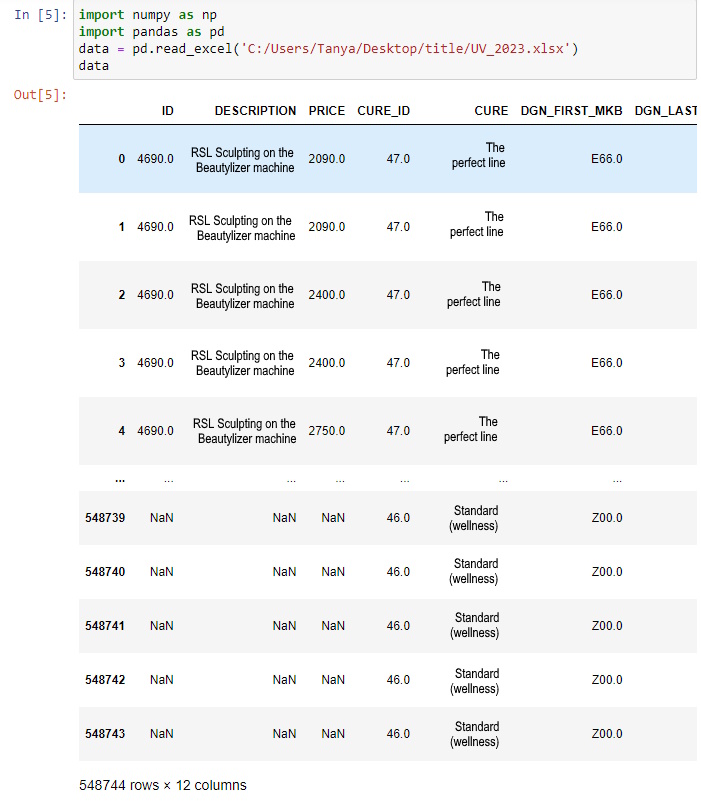
Figure 1 - Loading libraries and database
Pandas is a Python programming library designed to work with data. It works on the basis of the NumPy library and provides special data structures for working with numeric tables and time series. The pandas library provides operations for data management and analysis
.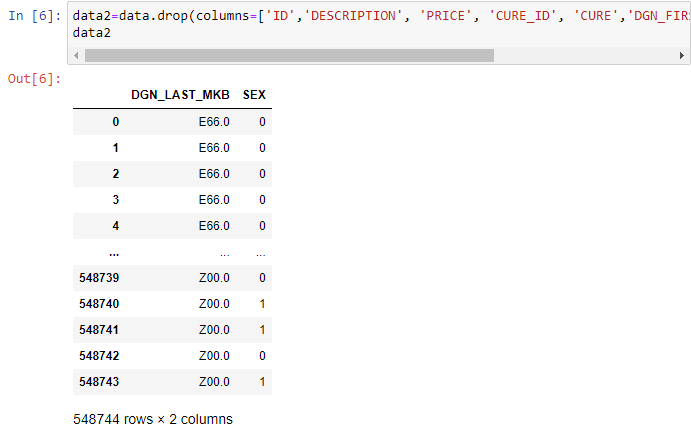
Figure 2 - Using the drop() function
In addition, database cleanup may include error correction and data standardization. This ensures the uniformity and correctness of the data, which is important for accurate analysis and reliable results.
In general, database cleanup is an important step before analysis, which helps to ensure data quality, improve performance and reliability of analysis results.
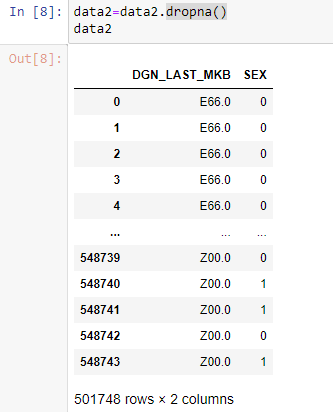
Figure 3 - Using the dropna() function
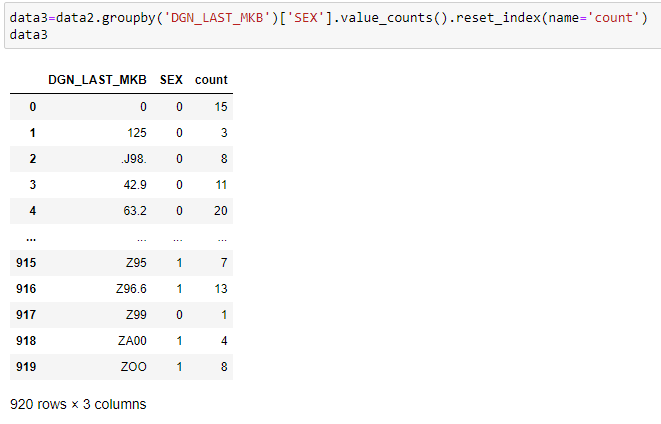
Figure 4 - Using the groupby() and value_counts() functions
3. Results and their discussion
Thanks to the plotly.express library, a graph was created (Fig. 5), based on which the following conclusions can be drawn:
1. The most common disease is M42.1 – Osteochondrosis of the spine in adults, the majority of whose owners are men, about 123 thousand people, which exceeds the number of women with a similar diagnosis by almost 2 times (Fig. 6).
To prevent this disease, it can be recommended to develop special programs and services aimed at prevention and treatment of osteochondrosis of the spine, as well as holding events aimed at men.
These packages can include specialized programs of physical rehabilitation, massage, fitness, and expert advice on recommended exercises for the prevention and treatment of diseases of the musculoskeletal system. You can also offer meals specially designed to meet the needs of men and their health, and conduct educational seminars on healthy lifestyles and disease prevention.
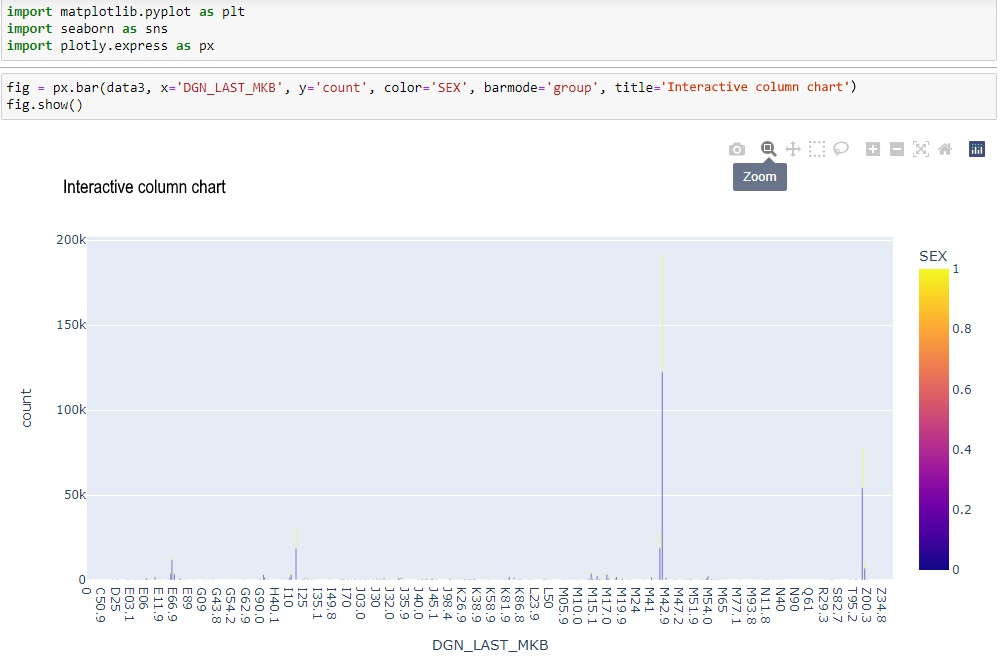
Figure 5 - Column diagram of the distribution of patients by final diagnosis and gender
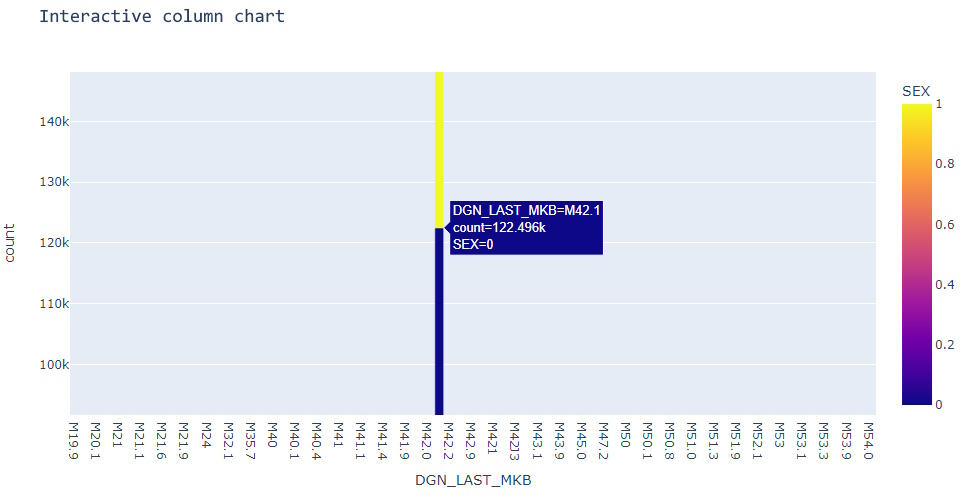
Figure 6 - Number of men diagnosed with M42.1
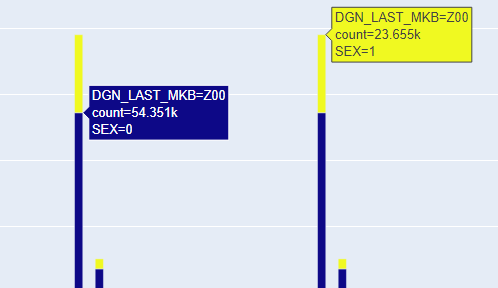
Figure 7 - Number of men and women diagnosed with Z00
Also, judging by the graph, it can be concluded that there is a significant prevalence of the diagnosis of E66 (obesity) among the male population (Fig. 8). It can be assumed that this is due to alcohol consumption. Alcohol contains a high number of calories and can contribute to the accumulation of body fat. In addition, alcohol can affect metabolism and eating behavior, which can lead to an increase in appetite and consumption of more food
.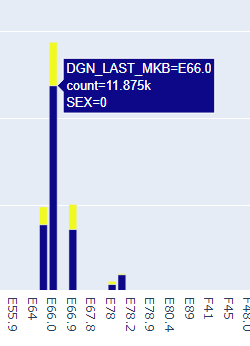
Figure 8 - Number of men diagnosed with E66
4. Conclusion
The relationship between gender and diagnosis is a complex research issue in the field of medicine. Differences in morbidity and response to treatment may be gender-specific and require additional study and analysis of the causes of this difference. Some diseases may occur more often in a certain gender, which underscores the importance of taking gender into account when conducting medical research.
The analysis of the relationship between the patient's gender and his final diagnosis is important for improving medical practice and developing personalized treatment approaches. Further research in this area may lead to the development of more effective treatment strategies that take into account the gender characteristics of patients.
To solve the problem, various Python functions were used, which made it possible to efficiently process data without resorting to the use of excessive computing power, and create a bar chart, thanks to which they were able to visualize the result.
